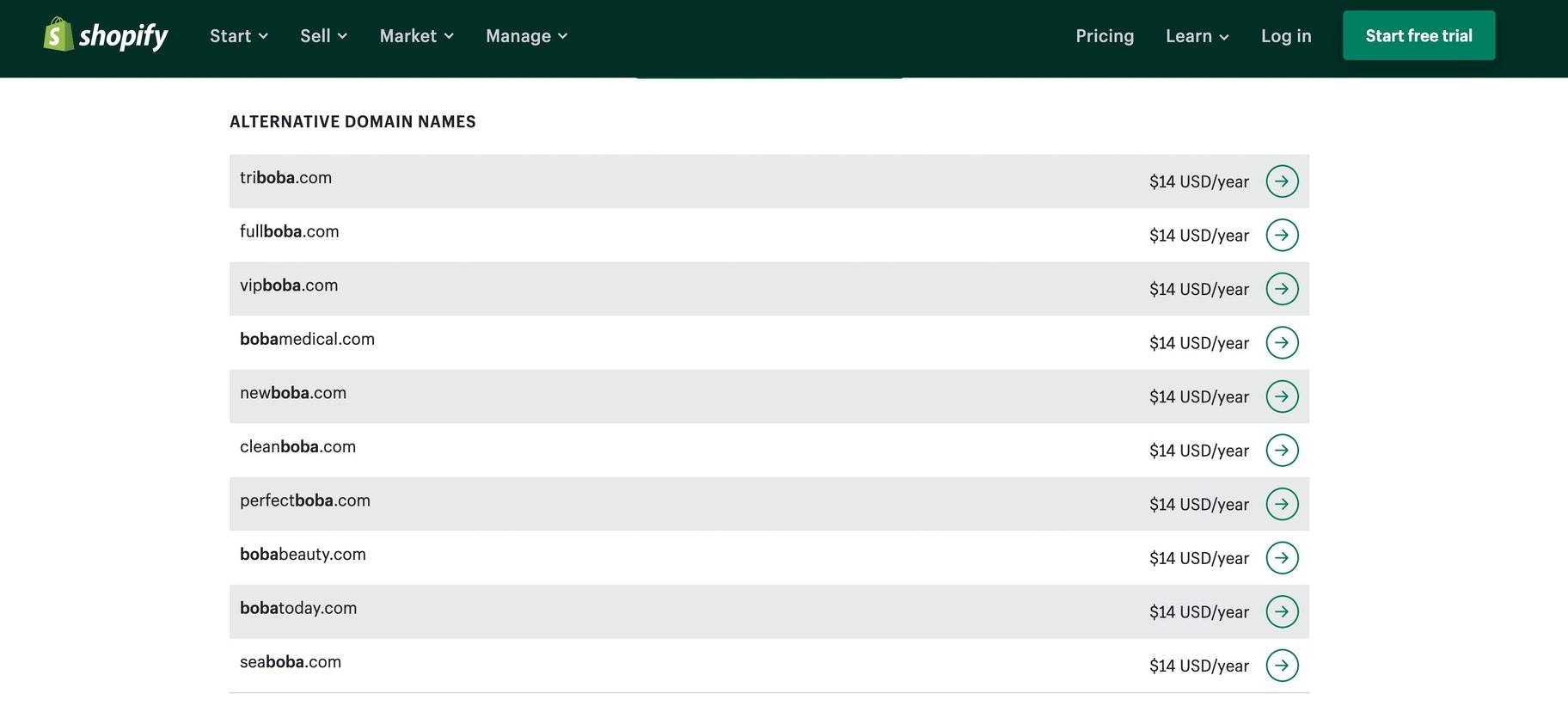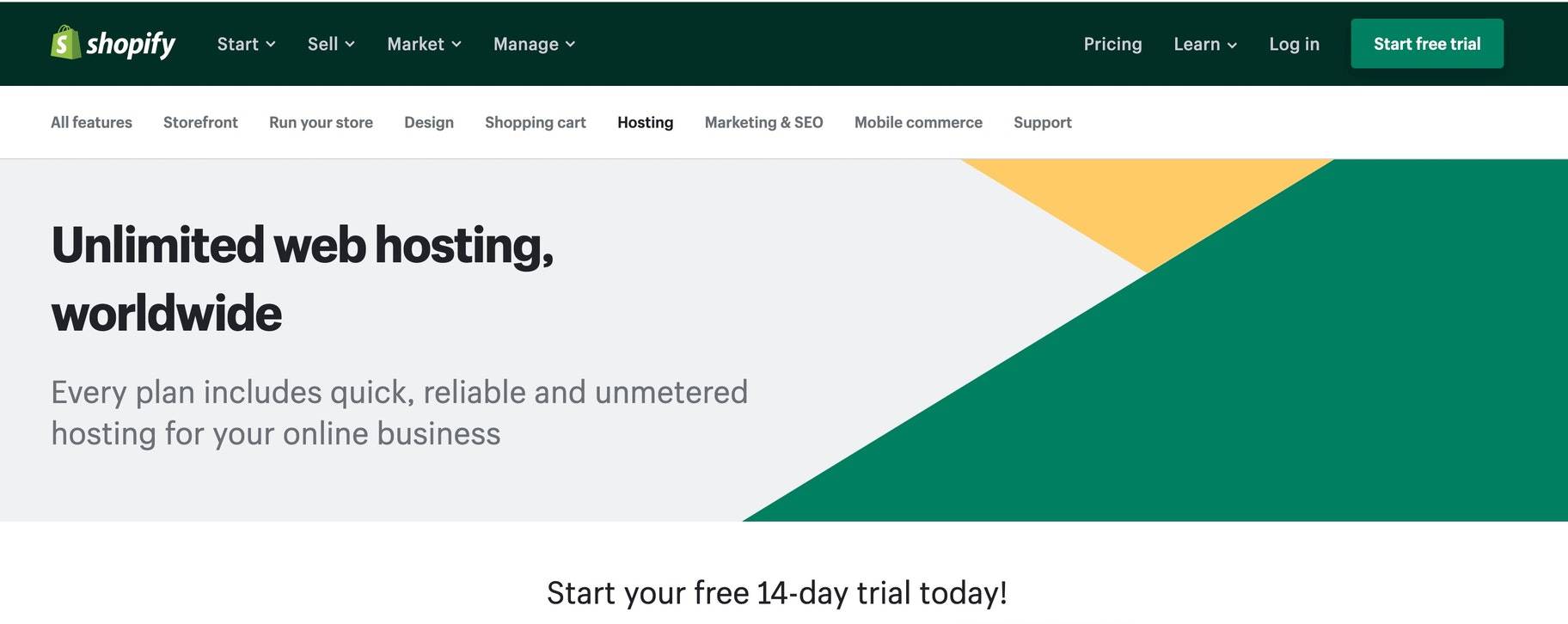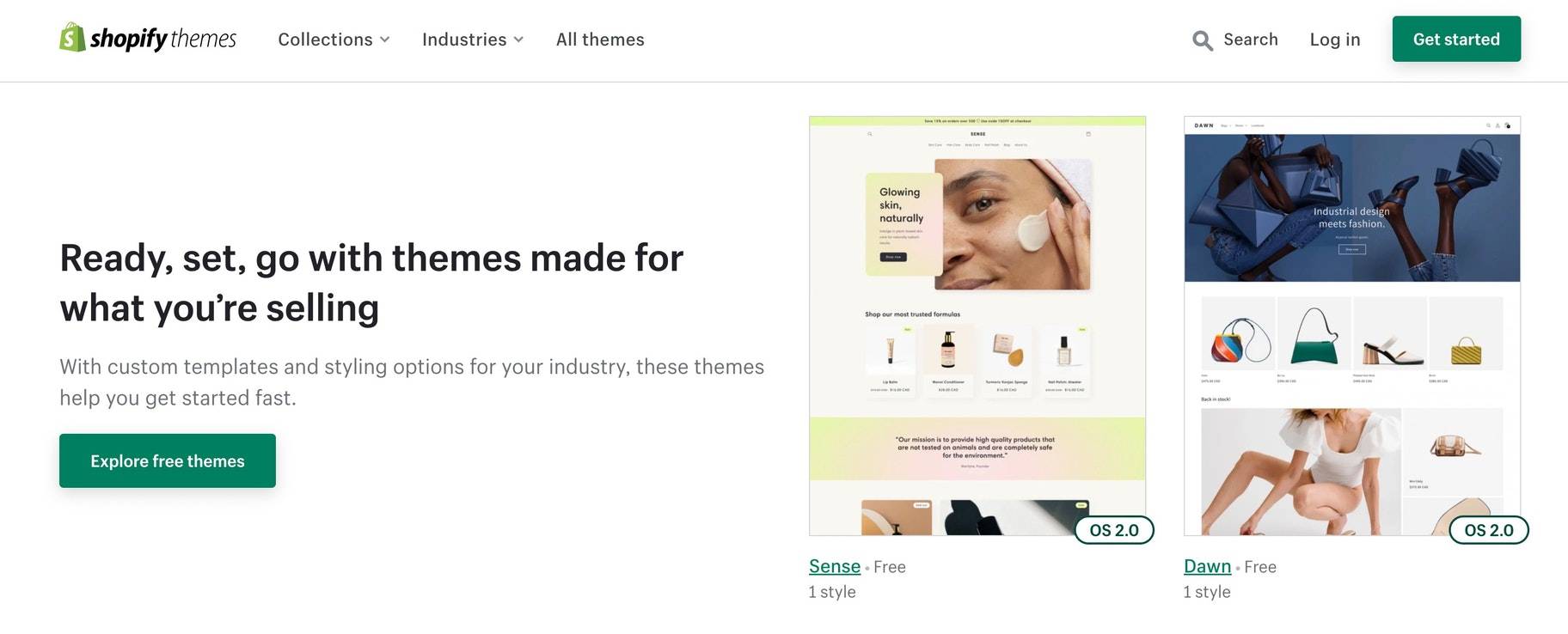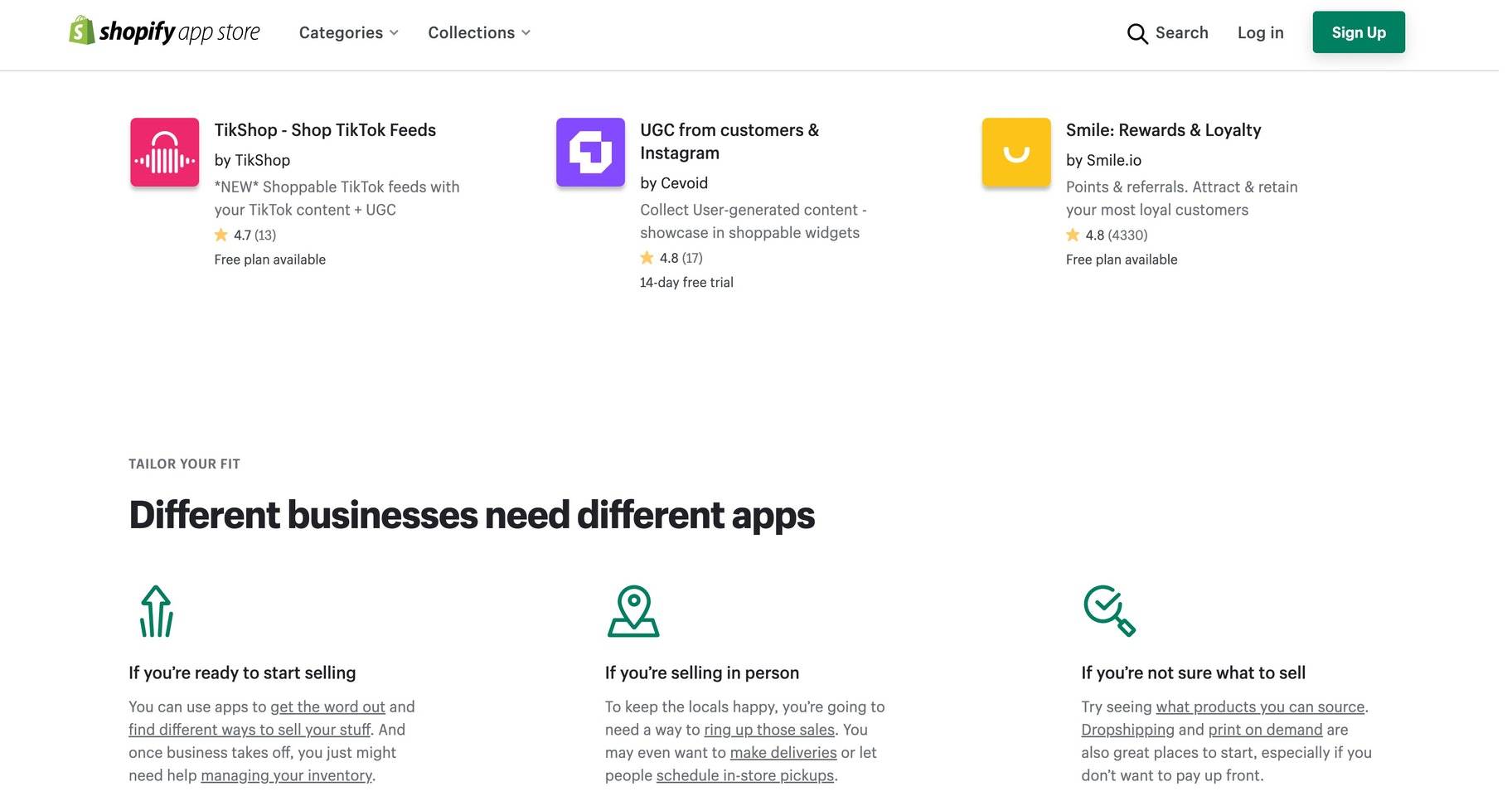You may have seen ads, promotions, and articles from gurus claiming you can build a website for free. While this is technically possible, you’ll get what you pay for in the end.
This is especially true when it comes to an ecommerce website, where you’ll need to fork out extra money to ensure your site is appealing and functional.
Fortunately, you can avoid the hassle by building up your ecommerce site yourself. This requires you to understand upfront your ecommerce website cost—and what features and functionality that cost will buy you.
In this article, we’ll look at how you can go about funding your ecommerce website and what you can expect from different methods, tools, and partners.
Don’t wait for someone else to do it. Hire yourself and start calling the shots.
Get Started Free
Ecommerce website cost
Hosting
All websites need hosting to function. Web hosting is a service that makes your website’s content accessible.
Your web hosting cost depends on a variety of factors, such as how much traffic your website gets and the add-on services you may need, such as automated backups.
Prices for standard web hosting can be as low as $ 1.39 per month, whereas a package with all the bells and whistles can climb up to $ 500 or higher.
You’ll also need a domain name, which is like a digital business card for your online store. You can get domain ideas through Shopify’s domain name generator, then register the domain you like through an ecommerce platform.

Coming back to hosting, there are two types commonly used by ecommerce stores:
Self-hosted ecommerce website
Some ecommerce website builders like PrestaShop and WooCommerce (a plug-in for WordPress) are free. But you need to have a subscription with a hosting service to buy a domain and manage your files. In this case, you’ll be “self-hosting” your ecommerce site.
Some costs you’ll incur when self-hosting include:
- A domain name, which typically costs $ 11.99 per year
- A web hosting account, which starts at $ 5.99 per month
- An SSL certificate, which starts at $ 69 per year
Some web hosts offer free SSL and a domain name in their package, but you get less bandwidth (capacity to receive web traffic) than you typically get with other hosting providers.
The main drawback of self-hosting is that as your ecommerce website grows, you’ll need to upgrade your hosting package to manage traffic volumes. For a high-traffic website, self-hosting costs can range between $ 1,000 to $ 2,500 per month.
Cloud ecommerce hosting
Ecommerce platforms like Shopify do not require you to host, install, or manage a domain on your own. Everything you need to run a site is included in your monthly software plan. Secure hosting is present in every Shopify plan, which provides you with:
- Blazing fast servers, so you don’t lose customers due to slow site speed
- Unlimited bandwidth, so you don’t have to stress about paying more if your traffic volume increases
- PCI compliance, which keeps customer information secure
- Unlimited email forwarding
- A free SSL certificate to prevent fraud and build customer trust

You’ll just need to purchase a domain name separately. If you buy a custom domain through Shopify’s domain registration service, configuration and setup will be handled for you. Pricing begins at around $ 11 per year for .com domains, but other top-level domains can run as high as $ 81 per year, depending on the extension you choose.
Hosting cost breakdown:
- Self-hosted: Between $ 5.99 and $ 2,500 per month with incremental upgrades.
- Cloud-hosted: As low as $ 29 per month with unlimited hosting.
Web design costs
Did you know that 75% of consumers make judgments about a company’s credibility based on its website design? Not only that, people buy based on trust, and a professional design can help build that trust in your business.
Ecommerce site builders like Shopify offer templates you can apply to your design easily. They are a quick and affordable way to improve the aesthetic quality of your website. Shopify themes come packed with tools to customize the style, colors, layout, and other settings.
Besides all that, the templates include:
- Homepage
- Shopping cart
- Product pages
- Checkout page
- About pages
- FAQ
Basically, you get everything you need to start your online store.
Shopify offers over 100 free and paid themes to help you find the right look and feel for your brand. You can narrow the options by categories such as minimalist style, big imagery, video, 3D products, and more. Prices can run from zero dollars to upward of $ 100, depending on the theme you pick.

Site content
Your online store needs content to inform people about what they can buy and why they should choose you over competing stores. Good site content is also necessary to rank well in search engines, as Google considers it to be one of the indicators of website credibility.
Although you can write the content yourself, your best bet is to hire a professional experienced in writing product and brand copy for ecommerce sites. The cost varies depending on the experience and profile rating of the content specialist. Some professionals charge between $ 100 and $ 500 per project, whereas high-rated writers have a starting price upward of $ 2,000.
Visit Shopify’s Expert directory to find content marketing professionals skilled in doing projects for ecommerce businesses.
Payment processor
A payment processor is a technology that facilitates payment transactions between buyers and merchants. Every online store must use one to accept debit cards, credit cards, and other smart pay options.
Many ecommerce platforms offer payment processors, with usage fees varying according to the plan you have with them. For instance, the Shopify Basic plan has a processing fee of 2.9% + $ 0.30 per transaction for online credit card payments. On the Advanced Shopify plan, the fee is 2.4%.
Every Shopify plan comes with Shopify Payments, which lets you accept credit cards and other popular payment methods like Apple Pay, Facebook Pay, and Shop Pay. According to Shopify, Shop Pay is especially popular amongst customers when it comes to online purchases. The average order value for those using Shop Pay was 6% higher, and they also bought 35% more than those using other payment methods.
Plug-ins and apps
Once you’ve set up your website, chances are you’ll want to expand its features and capabilities. The best ecommerce platforms let you add applications to your store to extend its functionality and improve the customer experience.
The Shopify App Store has over 3,000 apps for you to choose from, including many free ones to keep the cost of creating your ecommerce store low. Whether you want to display customer reviews, add email marketing, sell on Instagram, or connect with dropshipping suppliers, there’s an app for that.

Paid apps come with varying prices and are mostly offered on a monthly subscription basis. You can also generate Shopify API keys to use custom apps made specifically for your store. These can cost upward of $ 2,500, depending on your developer’s rates and experience.
Custom development
Custom development for ecommerce sites involves building the design, layout, fonts, and apps for your specific business needs. Shopify users can work with developers to create custom storefronts for their businesses.
Prices vary based on the scope of work, but most Shopify agencies charge between $ 5,000 and $ 50,000 for custom development. A more affordable option? Check out Shopify’s Experts marketplace, where you’ll find agencies and freelancers offering custom theme development for much less (prices start from $ 550).
Maintenance costs
Maintenance is always a consideration. After launching your ecommerce site, you’ll need to perform regular inspections and updates to ensure everything runs smoothly. The costs of maintaining sites built on ecommerce platforms vary depending on their scale.
Smaller websites don’t need extensive technical maintenance, but custom-built stores might need the assistance of a developer to keep things smooth. Expect to shell out $ 300 to $ 1,500 per year on a small to medium-sized store and $ 3,600 to $ 24,000 on a large site with huge traffic and vast inventory.
Balancing cost and outcomes for your ecommerce website
Now that you have a rundown of ecommerce website costs, it’s time to continue your own research.
While a website builder is often the less pricey option, you’ll need to stay on top of a few extra costs, like your hosting, plug-ins, themes, and optional help from a professional if you have custom ideas in mind.
The more prepared, thoughtful, and diligent you are, the better your web building experience will be. And the better your website will be in the end!
Want to learn more?
- Small Business Grants: Where to Find Them and How to Get Them
- How to Overcome Adversity as a Business Owner
- Small Business Accounting: How to Manage Your Own Books
- 101+ Best Tools and Software for Small Businesses